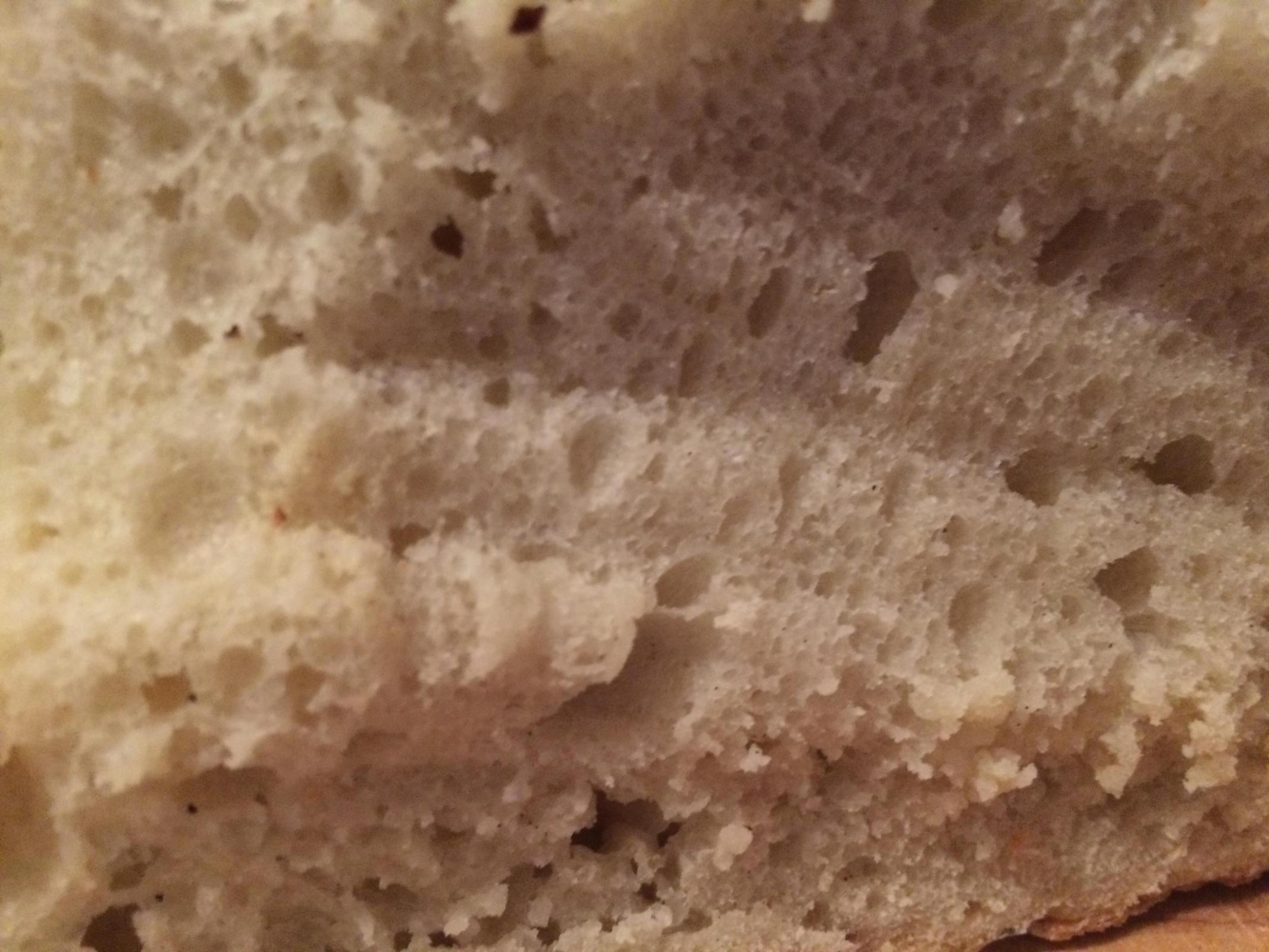October 12, 2017 - 3:37pm

Undercooked or just dense? (Photos)
Hi folks,
Trying to figure out if my bread is undercooked or just dense. It tastes great and it doesn't seem to be undercooked. But not sure.
For reference: around 75% hydration (of note: today was a very humid day, so maybe that upped the hydration a bit). Bulk fermented a little over three hours, proofed for two. Preheated oven to 500, placed dough in a cast-iron combo cooker, placed it in oven. Bumped temp back down to 450 and cooked covered for 20 minutes, uncovered for 25. Got a fairly nice rise out of it, nothing special but nothing bad either. Cut into it two hours after it came out of the oven.
So what do we think? It couldn't be undercooked at those temps, right?
(Sorry the cut is so brutal. I'm usually much better at slicing.)




I forgot to add:
1) I did slap-and-fold kneading for about seven minutes.
2) I did stretch-and-folds from there on out: one round of S&F every twenty minutes for about an hour and forty minutes, then one round of S&F every thirty minutes for another hour.
Looks pretty good to me.
Looks good. Check the internal temperature of the loaf to determine whether it is done. It should read 195+°F (91+°C) when the bread is done.
Ford
It has the appearance of a loaf that was cut while still warm, rather than being cooled down to room temperature.
Paul
There are two missing important facts: First, what's you flour mix? That is important in judging whether the crumb is optimal. Second, what is the weight of the loaf? That's important in judging the appropriateness of baking time and temperature. However, Ford's recommendation that you go by internal temperature is good. FWIW, I usually bake un-enriched wheat breads to 205 dF. I guess that's "195+."
All and all, I don't see anything wrong with your loaf visually.
David
Probably a bit dense, but part of the problem is that much of the air has collected in a few, large bubbles. This is a shaping issue. The crumb would look better with smaller, more randomly distributed holes.
As an aside, using slap and fold seems like a lot of work when your bread doesn't derive any benefit from the labor. Just a few stretch and folds can easily produce a better crumb.
With both 5+min of slap-and-folds and 7+ stretch & folds, I would point to loss of extensibility (i.e. overdeveloped gluten) as a likely cause of the density. If your dough becomes too tight, it will prevent expansion in the oven.
pop those big bubbles during shaping and let the dough proof a tad longer.
and...chain saw not needed to slice bread. :)
It's likely a density issue related to weakness of the gluten (extensibility as another member already mentioned) rather than it being under proofed. The presence of the big gas bubbles tells me it's not likely underproofed but that the gluten strength is too weak to hold up the bubbles. It could also be a shaping issue as that does trap large gas bubbles but it isn't the primary problem.
I agree with tgrayson in that you don't need the slap and folds. I've tried many diff methods and techniques of mixing prior to S&Fs and IMO they are detrimental to the gluten network. The added work to the dough causes tears to the gluten network and weaken the overall internal gluten strength. I get much strong doughs with just autolyse, S&Fs, and proper shaping.
It looks like a high protein bread flour was used. Am I correct in that? A lower gluten flour may giv you a lighter texture, also.